
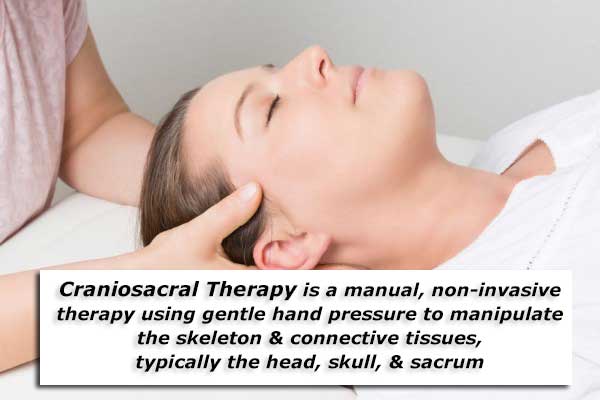 Craniosacral Therapy, also called cranial osteopathy and cranial therapy, is a manual, non-invasive therapy using gentle hand pressure to manipulate the skeleton and connective tissues, typically the head, skull, and sacrum (the large triangular bone at the base of the spinal column). The purpose is to release tensions deep in the body in order to relieve pain and dysfunction. CST is increasingly used as a preventive health measure for its ability to bolster resistance to disease, and it's effective for a wide range of medical problems associated with pain and dysfunction (Upledger Institute International).
Craniosacral Therapy, also called cranial osteopathy and cranial therapy, is a manual, non-invasive therapy using gentle hand pressure to manipulate the skeleton and connective tissues, typically the head, skull, and sacrum (the large triangular bone at the base of the spinal column). The purpose is to release tensions deep in the body in order to relieve pain and dysfunction. CST is increasingly used as a preventive health measure for its ability to bolster resistance to disease, and it's effective for a wide range of medical problems associated with pain and dysfunction (Upledger Institute International).
CST is a therapy stemming from osteopathy. Osteopaths use manual techniques to manipulate and strengthen the musculoskeletal framework. Osteopaths focus on muscles, joints, ligaments, tendons and the spine.
Weil, Andrew MD. WEIL/Cranial Osteopathy. Retrieved from:
https://www.drweil.com/health-wellness/balanced-living/wellness-therapies/cranial-osteopathy/
Upledger Institute International/CST FAQs. Retrieved from: https://www.upledger.com/therapies/faq.php
Dr. Axe DC DMN CNS, Josh. (2017 October 12). Dr. Axe FOOD IS MEDICINE/Craniosacral Therapy for Depression, Neck Pain, & Headaches. Retrieved from:
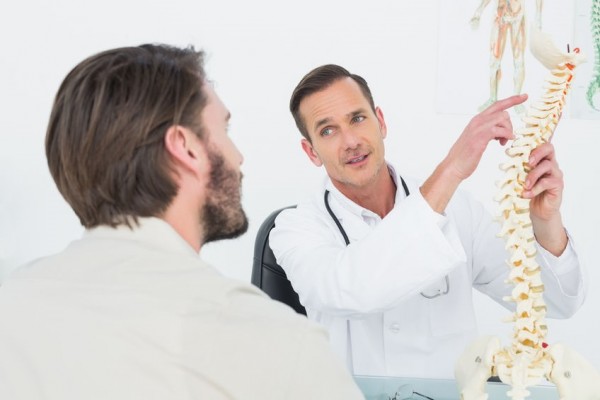 Craniosacral therapy is an alternative treatment used by many Osteopaths. Sometimes Chiropractors, Physical Therapists, and Massage Therapists also offer craniosacral therapy.
Craniosacral therapy is an alternative treatment used by many Osteopaths. Sometimes Chiropractors, Physical Therapists, and Massage Therapists also offer craniosacral therapy.
There are online directories to search for craniosacral therapists who may be in your area, both in the U.S. and abroad. Often a myofascial release therapist also offers craniosacral therapy. You can search at
- John F. Barnes' Myofascial Release Therapist Director
- Upledger’s International Association of Healthcare Practitioners
- The Craniosacral Therapy Association of North America.
The Osteopathic Cranial Academy will also help you get in contact with an Osteopath who does craniosacral therapy.
Craniosacral therapy may be covered under insurance depending on the practice and location. In some cases, it is reimbursed under employee flexible healthcare accounts.
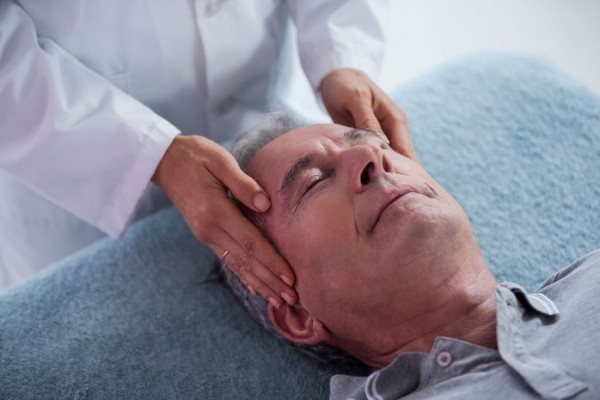 Be aware: There are some physical therapists and massage therapists that may say they offer craniosacral therapy but don’t have comprehensive training or medical experience. Make sure you find someone well-trained and with lots of experience, preferably who is certified by The Osteopathic Cranial Academy or another professional organization. A therapist trained through John F. Barnes or Upledger will be your best option.
Be aware: There are some physical therapists and massage therapists that may say they offer craniosacral therapy but don’t have comprehensive training or medical experience. Make sure you find someone well-trained and with lots of experience, preferably who is certified by The Osteopathic Cranial Academy or another professional organization. A therapist trained through John F. Barnes or Upledger will be your best option.
Craniosacral therapy could reduce or eliminate the need for pain medication, as a very safe, non-invasive treatment option. Some benefits people experience includes deep feelings of relaxation, reduced muscle tension, improved mood, improved pain tolerance and reduced stress levels.
In one study, patients experiencing headaches, migraines, neck pain, back pain, anxiety, or depression, saw great enough improvements to reduce medication, and some even discontinued it altogether. There are studies to support improvements in many other chronic pain conditions. CST has also been shown to help with infants experiencing colic, teething, and problems from birth trauma. Studies don’t show many significant changes, but some possible benefits include improvement in sleep, digestion, and moods through easing tension in the baby’s body.
Dr. Axe DC DMN CNS, Josh. (2017 October 12). Dr. Axe FOOD IS MEDICINE/Craniosacral Therapy for Depression, Neck Pain, & Headaches. Retrieved from:
https://draxe.com/craniosacral-therapy/
Weil, Andrew MD. WEIL/Cranial Osteopathy. Retrieved from:
https://www.drweil.com/health-wellness/balanced-living/wellness-therapies/cranial-osteopathy/
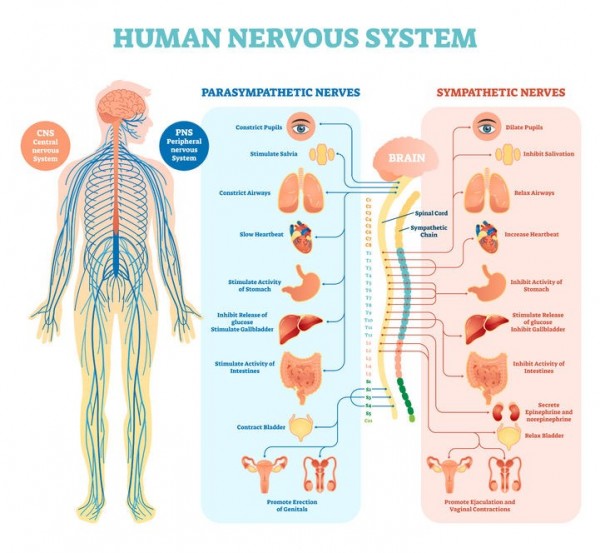 Few structures have as much influence over the body's ability to function properly as the brain and spinal cord that make up the central nervous system (Upledger). Likewise, the central nervous system is greatly influenced by the craniosacral system. The stresses and strains of life can cause tightening and distorting in the craniosacral system (membranes and cerebrospinal fluid that surround and protect the brain and spinal cord) and lead to restrictions. This will affect the health of the central nervous system, and possibly other systems it works with. So craniosacral therapy aims to activate the body’s own healing capabilities using hands-on-therapy to remove restrictions.
Few structures have as much influence over the body's ability to function properly as the brain and spinal cord that make up the central nervous system (Upledger). Likewise, the central nervous system is greatly influenced by the craniosacral system. The stresses and strains of life can cause tightening and distorting in the craniosacral system (membranes and cerebrospinal fluid that surround and protect the brain and spinal cord) and lead to restrictions. This will affect the health of the central nervous system, and possibly other systems it works with. So craniosacral therapy aims to activate the body’s own healing capabilities using hands-on-therapy to remove restrictions.
A CST practitioner will use their hands to feel for ease of motion and rhythm of cerebrospinal fluid surrounding the brain and spinal cord. They will then use soft touch techniques (typically 5 grams about the weight of a nickel) to release restrictions in any tissues which surround the central nervous system. This gives the body the ability to self-correct corresponding problems. There is much debate over how craniosacral therapy actually works from a scientific perspective. There are many different theories. To read founder, John Upledger’s in depth scientific theory on how craniosacral motion works view: Gentle Healing Arts Natural Medicine & Craniosacral Therapy
Upledger Institute International/CST FAQs. Retrieved from: https://www.upledger.com/therapies/faq.ph
Dr. Axe DC DMN CNS, Josh. (2017 October 12). Dr. Axe FOOD IS MEDICINE/Craniosacral Therapy for Depression, Neck Pain, & Headaches. Retrieved from:
https://draxe.com/craniosacral-therapy/
Gentle Healing Arts: NATURAL MEDICINE & CRANIOSACRAL THERAPY/History of Craniosacral Therapy. Retrieved from: https://www.gentlehealingarts.com/history-of-craniosacral-therapy/
|
|
Upledger Institute International/CST FAQs. Retrieved from: https://www.upledger.com/therapies/faq.php
Leonard, Jayne. (2017 July 20). MedicalNewsToday/Craniosacral therapy: Does it work?. Retrieved from: https://www.medicalnewstoday.com/articles/318490.php
Dr. Axe DC DMN CNS, Josh. (2017 October 12). Dr. Axe FOOD IS MEDICINE/Craniosacral Therapy for Depression, Neck Pain, & Headaches. Retrieved from:
https://draxe.com/craniosacral-therapy/
Gotter, Ana. (2017 September 18). healthline/CranialSacralTherapy. Retrieved from:
https://www.healthline.com/health/cranial-sacral-therapy#takeaway
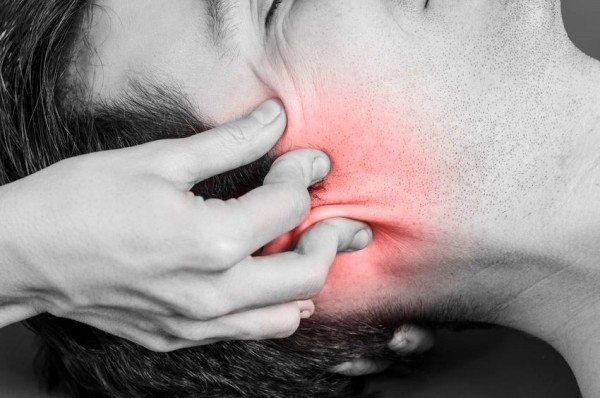 It is considered to be safe for the majority of people, but is not recommended for conditions including acute aneurysm, cerebral hemorrhage, recent spinal cord or head injuries or severe bleeding disorders (Dr. Axe, 2017). CST is even considered safe for infants due to it being a gentle, non-invasive treatment. Some possible but rare and temporary side effects include lightheadedness, dizziness, heavy sensation in head, nausea, or pain in lower back.
It is considered to be safe for the majority of people, but is not recommended for conditions including acute aneurysm, cerebral hemorrhage, recent spinal cord or head injuries or severe bleeding disorders (Dr. Axe, 2017). CST is even considered safe for infants due to it being a gentle, non-invasive treatment. Some possible but rare and temporary side effects include lightheadedness, dizziness, heavy sensation in head, nausea, or pain in lower back.
Dr. Axe DC DMN CNS, Josh. (2017 October 12). Dr. Axe FOOD IS MEDICINE/Craniosacral Therapy for Depression, Neck Pain, & Headaches. Retrieved from: https://draxe.com/craniosacral-therapy/
patientslikeme/CRANIAL SACRAL THERAPY TREATMENT REPORT. Retrieved from: https://www.patientslikeme.com/treatments/show/3132-craniosacral-therapy-side-effects-and-efficacy
Discovering the Craniosacral System
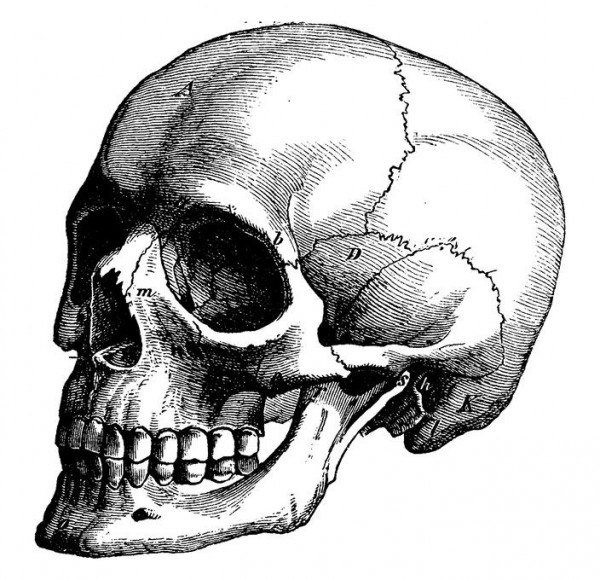 The concept behind Craniosacral therapy was discovered by osteopathic physician Dr. William Garner Sutherland in the early 1900s, a student of Andrew Taylor Still, the founder of Osteopathy. Sutherland intensely studied the human skull for ways to release restrictions. He had a theory that the bones of the skull were structured to allow for movement. Unfortunately, Sutherland's work came at a time when the American Medical Association used the money of some of America's great tycoons to lobby the government to outlaw both Osteopathy and Chiropractic, which had grown up in the same period of time (Gentle Healing Arts). Sutherland's theories were not well accepted by the scientific and medical communities.
The concept behind Craniosacral therapy was discovered by osteopathic physician Dr. William Garner Sutherland in the early 1900s, a student of Andrew Taylor Still, the founder of Osteopathy. Sutherland intensely studied the human skull for ways to release restrictions. He had a theory that the bones of the skull were structured to allow for movement. Unfortunately, Sutherland's work came at a time when the American Medical Association used the money of some of America's great tycoons to lobby the government to outlaw both Osteopathy and Chiropractic, which had grown up in the same period of time (Gentle Healing Arts). Sutherland's theories were not well accepted by the scientific and medical communities.
Developing Craniosacral Therapy Treatment
In the 1970’s John Upledger, an osteopathic physician, observed rhythmic movement during a neck surgery he was assisting. He was unable to find any medical text or colleague to explain it. However, after researching Sutherland’s theory of cranial movement, the rhythm he experienced during surgery made sense. Dr. Upledger then worked on scientifically proving that this theory was in fact correct. From 1975 to 1983 he served as clinical researcher and Professor of Biomechanics at Michigan State University, where he supervised a team of anatomists, physiologists, biophysicists and bioengineers in research and testing (Upledger Institute International).
Upledger’s research not only proved Sutherland’s theory, but also provided reasoning for the movement – the craniosacral system. Upledger developed CST techniques and became known as the “modern founder of Craniosacral Therapy.”
Gentle Healing Arts: NATURAL MEDICINE & CRANIOSACRAL THERAPY/History of Craniosacral Therapy. Retrieved from: https://www.gentlehealingarts.com/history-of-craniosacral-therapy/
Dr. Axe DC DMN CNS, Josh. (2017 October 12). Dr. Axe FOOD IS MEDICINE/Craniosacral Therapy for Depression, Neck Pain, & Headaches. Retrieved from:
https://draxe.com/craniosacral-therapy/
Upledger Institute International/CST FAQs. Retrieved from: https://www.upledger.com/therapies/faq.php
 Just remember, everyone’s body is different, so what may work for one person, may not work for another person, even if both people are labeled with the same health condition.
Just remember, everyone’s body is different, so what may work for one person, may not work for another person, even if both people are labeled with the same health condition.
- Treatments for headaches, neck, back pain, anxiety and depression
Published in the Journal of Alternative and Complimentary Medicine, a study was done with 157 patients receiving CST for different health ailments. Of the 157 people, 74% reported significant improvement, 67% said their well-being and chronic stress improved, and 70% were able to decrease or discontinue their medication. - Treatment for Neck Pain
Another study published in the Clinical Journal of Pain had 54 participants and used “sham treatments” on half the people. In comparison with the sham, the results showed 78% who received craniosacral therapy saw improvements with 48% reporting significant clinical benefits. - Reducing Headaches
To test migraine pain intensity and frequency a randomized control trial, published in the journal BMC Complementary and Alternative Therapy, was conducted for an eight-week period. The group receiving CST showed reduction in the duration of how long their headaches lasted after 30 days, along with intensity. At the end of eight weeks, headache intensity reduced even more. - Fibromyalgia Symptoms
A study published in Evidence Based Complementary and Alternative Medicine had 84 participants and half received placebo treatments. After 25-weeks results showed significant improvements in symptoms including anxiety, pain, quality of life, and sleep for the CTS group. A year later, sleep problems were still better, however other improvements were not reported.
Here are some other studies to view on the effectiveness of Craniosacral Therapy: Upledger Institute International.
Dr. Axe DC DMN CNS, Josh. (2017 October 12). Dr. Axe FOOD IS MEDICINE/Craniosacral Therapy for Depression, Neck Pain, & Headaches. Retrieved from:
https://draxe.com/craniosacral-therapy/
Upledger Institute International/CST FAQs. Retrieved from: https://www.upledger.com/therapies/faq.php
In many states in the US, it is a requirement to have a license in massage therapy, occupational therapy, physical therapy, or medical background as an Osteopath, Chiropractor, or MD to practice craniosacral therapy.
Craniosacral Therapy School
Currently, craniosacral therapy school is not specifically regulated at the state or federal level (natural healers). Although, many states do regulate massage therapy and other bodywork professionals. So you can check licensing guidelines for specific professions in the state in which you live. Requirements for completion of certain courses and exams in Craniosacral Therapy will also vary depending on your state. The Osteopathic Cranial Academy, an international membership organization, provides training to qualified health care professionals. The Academy also provides certificates to the members who have successfully completed their postgraduate studies in cranial osteopathy.
Professionals may also obtain a Registered Craniosacral Therapist certification from the Biodynamic Craniosacral Therapy Association of North America. Education and training through the Biodynamic Craniosacral Therapy Association of North America will typically require 700 hours of study. It may take less time depending on past coursework as an already licensed professional in massage therapy or something else. Craniosacral therapy school focuses on the study of the skeletal system, fluid movement, and the neuro-endocrine system, and how the body’s physical and energetic systems are interrelated (natural healers).
Vaught CMT, Wes. University of Minnesota/TAKING CHARGE of Your HEALTH & WELLBEING: Craniosacral Therapy. Retrieved from: https://www.takingcharge.csh.umn.edu/explore-healing-practices/craniosacral-therapy
naturalhealers/Craniosacral Therapy School, Training and Careers. Retrieved from: https://www.naturalhealers.com/massage-therapy/craniosacral-therapy/
Upledger Institute International/CST FAQs. Retrieved from: https://www.upledger.com/therapies/faq.php
Initial Appointment
At your first appointment, the practitioner will get an idea of history of injuries, possibly birth circumstances, typical medical history information, lifestyle habits, and symptoms you are experiencing. The practitioner will then start by softly massaging a person’s skull, or spine, ribcage, and sacrum to examine the patient’s condition. They will evaluate “craniosacral rhythms” contributing to symptoms of pain or tension.
What Happens at Each Appointment?
During treatment the patient will lay down in a relaxed position on their back. During the session the craniosacral specialist will apply light pressure (around 5 grams) to select points on a person’s head, torso, knees, or even feet using only their hands. Treatments will gently free up restrictions in the movement of cranial bones which will also normalize the flow of the cerebrospinal fluids. The practitioner will make adjustments to the treatment based on what he or she feels at the selected points in the craniosacral system, along with the patient’s response. Throughout treatment, sensations some people mention include deep feelings of relaxation, sleepiness, sensing pulsations, numbing sensation, and even cold or hot sensations. Overall people usually experience calming sensations.
How Long Does It Take?
Craniosacral sessions typically take about 45 minutes to 1.5 hours to start with. Additional sessions may take anywhere from 30 minutes to an hour. The number of sessions will depend on your specific health condition, but many benefit from 3 to 10 sessions. Sessions may be once a week or three times a week over the course of several weeks.
Weil, Andrew MD. WEIL/Cranial Osteopathy. Retrieved from:
https://www.drweil.com/health-wellness/balanced-living/wellness-therapies/cranial-osteopathy/
Dr. Axe DC DMN CNS, Josh. (2017 October 12). Dr. Axe FOOD IS MEDICINE/Craniosacral Therapy for Depression, Neck Pain, & Headaches. Retrieved from:
https://draxe.com/craniosacral-therapy/
Vaught CMT, Wes. University of Minnesota/TAKING CHARGE of Your HEALTH & WELLBEING: Craniosacral Therapy. Retrieved from: https://www.takingcharge.csh.umn.edu/explore-healing-practices/craniosacral-therapy
Gotter, Ana. (2017 September 18). healthline/CranialSacralTherapy. Retrieved from:
https://www.healthline.com/health/cranial-sacral-therapy#takeaway
Upledger Institute International/CST FAQs. Retrieved from: https://www.upledger.com/therapies/faq.php
Leonard, Jayne. (2017 July 20). MedicalNewsToday/Craniosacral therapy: Does it work?. Retrieved from: https://www.medicalnewstoday.com/articles/318490.php
Vaught CMT, Wes. University of Minnesota/TAKING CHARGE of Your HEALTH & WELLBEING: Craniosacral Therapy. Retrieved from: https://www.takingcharge.csh.umn.edu/explore-healing-practices/craniosacral-therapy
Dr. Axe DC DMN CNS, Josh. (2017 October 12). Dr. Axe FOOD IS MEDICINE/Craniosacral Therapy for Depression, Neck Pain, & Headaches. Retrieved from:
https://draxe.com/craniosacral-therapy/
Gotter, Ana. (2017 September 18). healthline/CranialSacralTherapy. Retrieved from:
https://www.healthline.com/health/cranial-sacral-therapy#takeaway
naturalhealers/Craniosacral Therapy School, Training and Careers.
Retrieved from: https://www.naturalhealers.com/massage-therapy/craniosacral-therapy/
Weil, Andrew MD. WEIL/Cranial Osteopathy. Retrieved from:
https://www.drweil.com/health-wellness/balanced-living/wellness-therapies/cranial-osteopathy/
Gentle Healing Arts: NATURAL MEDICINE & CRANIOSACRAL THERAPY/History of Craniosacral Therapy. Retrieved from: https://www.gentlehealingarts.com/history-of-craniosacral-therapy/
patientslikeme/CRANIAL SACRAL THERAPY TREATMENT REPORT. Retrieved from: https://www.patientslikeme.com/treatments/show/3132-craniosacral-therapy-side-effects-and-efficacy
